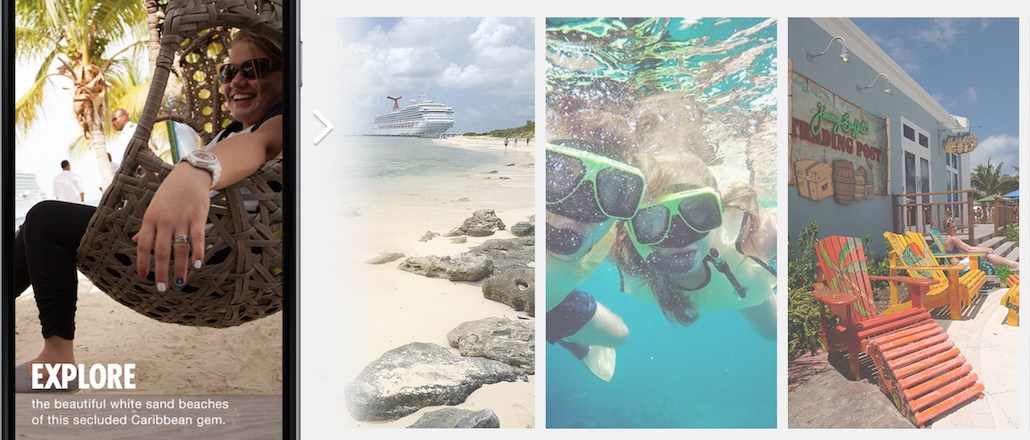Carnival Cruise: Facebook users are spending almost 3 minutes with its Canvas ads

The early test partners of Facebook’s Canvas ads claim they are capturing people’s attention for minutes at a time, performing stronger than most video.
Facebook test-launched the ads earlier this year with a handful of brands like Wendy’s, Gatorade, Target, Macy’s, Michael Kors and Carnival Cruise Lines. Canvas ads, which will open widely to advertisers early next year, are billed as Instant Articles for brands, including video, large photos, GIFs and other interactive features.
This month, Carnival Cruise Lines ran its first Canvas campaign to target a broad audience of potential newcomers to cruising. The ad takes over the whole mobile screen so users can scroll through the rich imagery, showing off the cruise ship, the ports of call and vacation activities.
Carnival said that 50 percent of people who opened the ad scrolled through until the end. Also, the average time spent with the ad was between 135 seconds and 174 seconds, longer than the ad’s running time of two minutes, Carnival said.
“It becomes a completely immersive experience on someone’s phone. That really allowed us to digitally build out a cruise itinerary,” said Stephanie Parker, associate director of social and content systems at Arnold Worldwide, the agency behind the ad.
The Canvas ads are still new, which could account for some early interest from users due to the novelty. Also, Carnival said the ad reached thousands in its target audience, which is not massive.
Still, Wendy’s saw similarly engaging results from its Canvas campaign. Wendy’s said 39 percent of people who opened the ad viewed it all the way through, averaging 65 seconds with it.
“[Canvas ads] are absolutely gorgeous to highlight whatever asset,” said Cristin Jordan, a channel director of social at VML, which helped develop the Wendy’s campaign.
Wendy’s and Carnival would not say overall what percentage of people opened the ad after seeing it in their Facebook News Feed. The stats only reflect the percentage of people who went to the end of the ads after opening them.
It’s unclear how Canvas ads could impact brands’ desire to sponsor Instant Articles when they could spring for a Canvas post all their own. Facebook is reportedly working with Instant Articles publishers to help them figure out a more lucrative ad model.
Wendy’s and Carnival would not say exactly how much the Facebook Canvas ads cost. Carnival said it cost as much as other Facebook campaigns.
“We’re able to cost-efficiently get people to consume more content than they would with any other ad unit,” Carnival said.
Facebook did not have any official results ready from all the Canvas tests. Wendy’s and Carnival shared early numbers on engagement but did not have other important metrics like how much impact the campaigns would have on actual sales.
“Canvas enables advertisers to create an immersive experience for people on mobile that hasn’t been possible until now. The creative execution from our initial partners has been very impressive, and we look forward to seeing how advertisers utilize Canvas as we expand the test,” said Zack Hendlin, Facebook product manager, in an e-mailed statement.
More in Media

Yahoo takes cues from platforms as it offers more editorial control to creators
Through its creator program, Yahoo is evolving from its roots as a content aggregator and editorial publisher to more of a distribution platform for individual creators.

Podcast companies turn to live events to capture growing advertiser spend
The surge in the number of live podcast events in 2025 reflects a broader shift: advertisers are betting bigger on podcasts — not just as an audio channel but as a full-fledged creator economy play.

Media Briefing: ‘Cloudflare is locking the door’: Publishers celebrate victory against AI bot crawlers
After years of miserably watching their content get ransacked for free by millions of unidentified AI bot crawlers, publishers were finally thrown a viable lifeline.





